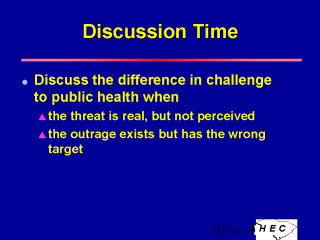| front |1 |2 |3 |4 |5 |6 |7 |8 |9 |10 |11 |12 |13 |14 |15 |16 |17 |18 |19 |20 |21 |22 |23 |24 |25 |26 |review |
 |
Public opinion surveys continue to reflect the public’s view of the linkage between health and the environment. The Centers for Disease Control and Prevention’s (CDC) Morbidity and Mortality Weekly Report (MMWR), March 31, 2000 42(12), pp.258-260, reported findings from a recent survey: “When asked about environmental factors (e.g., pollution) and their relation to public health, 85% said they believed that environmental factors are important determinants of disease and health problems. Of these, 38% considered environmental factors very important. Respondents were asked to indicate how much impact environmental problems have on the public health. Most respondents believed that environmental factors play an important role in causing certain diseases. Sinus and allergy problems (54%), childhood asthma (54%), childhood cancer (39%), colds and influenza (35%), and birth defects (36%) were the health problems seen as most likely resulting from environmental factors (Table 1). Respondents were given nine environmental issues and asked what impact each had on the population's health (a great deal, some, not too much, not at all, or don't know). Contaminated drinking water (58%), toxic waste (56%), air pollution (53%), foods contaminated with bacteria (53%), and pesticides in foods (47%) were considered to have the greatest impact (Table 2). Reported by: SA Hearne, DrPH, PA Locke, DrPH, Pew Environmental Health Commission, Johns Hopkins School of Public Health, Baltimore, Maryland. M Mellman, P Loeb, L Dropkin, Mellman Group; G Bolger, N Fink, Public Opinion Strategies, Washington, DC. M Byrnes, MPA, Pew Charitable Trusts, Philadelphia, Pennsylvania. |
| front |1 |2 |3 |4 |5 |6 |7 |8 |9 |10 |11 |12 |13 |14 |15 |16 |17 |18 |19 |20 |21 |22 |23 |24 |25 |26 |review |